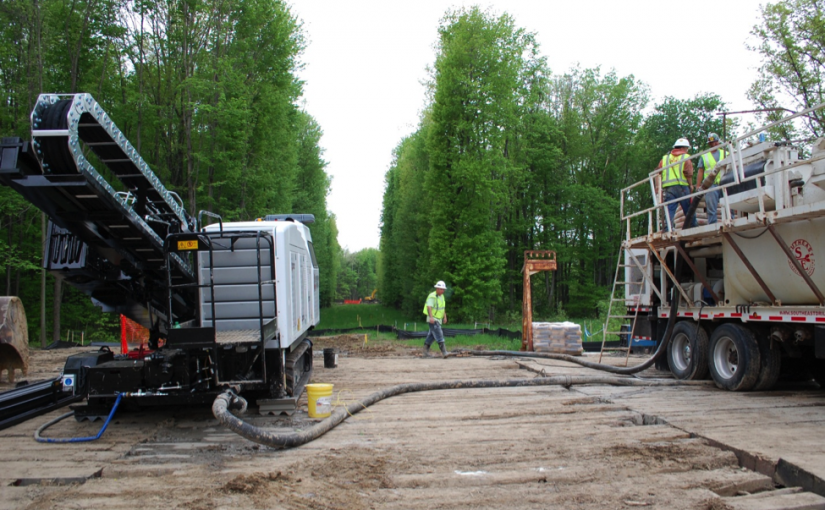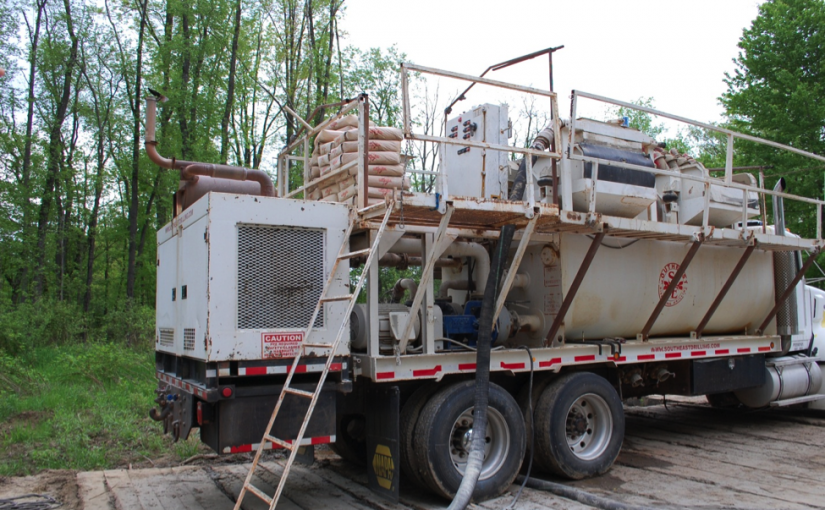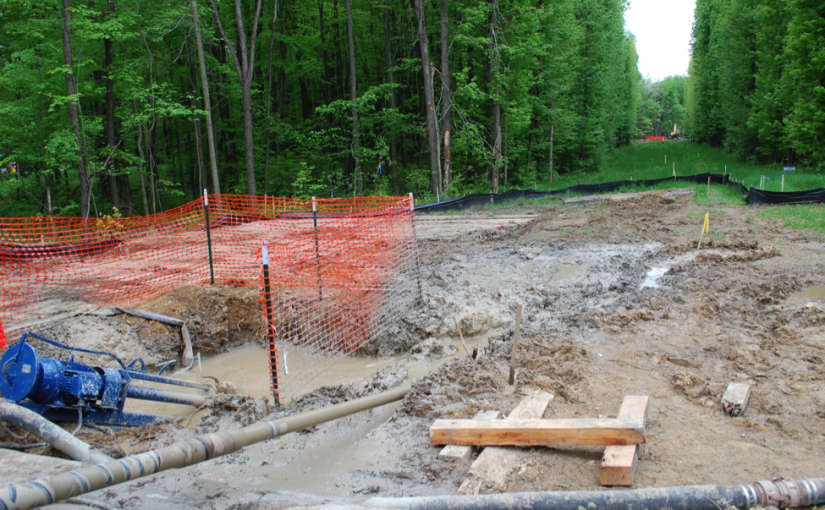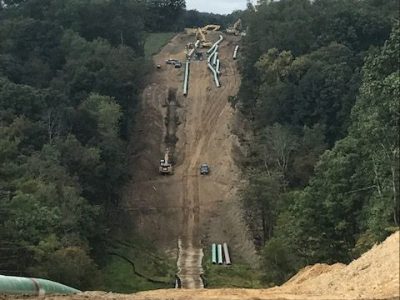Pipeline Boring
Can a pipeline be installed on my land without disturbing the surface?
Sometimes a pipeline company runs into something that they can’t excavate above-ground, such as a wetland, a driveway, a public road, or an area known to contain endangered species (the EPA and the ODNR take wetlands very seriously in the State of Ohio). In such a situation, the pipeline company won’t be able to dig a trench, so instead they will bore underneath the area.
What’s the difference between above-ground installation (trenching) and below-ground installation (boring)?
Trenching is referred to as ‘open cutting’ the property. I love this term because it sounds exactly like what it is: an open cut running across your land. The opposite of open cutting is ‘boring,’ which doesn’t sound anything like what it means. Boring sounds fairly mild. The pipeline representative will likely downplay it, also making it seem mild. In reality, boring can be one of the messiest parts to any pipeline installation. The equipment utilized is huge, loud and makes a mess, particularly on wet areas. That being said, if your paperwork is properly handled, you can expect your property to be put back to the way it was when the pipeline installation is complete. Even with proper paperwork, you should expect a temporary mess.
Boring involves digging out an underground cavern to push pipe through without having to disturb the surface. The first part of the process is digging two pits on either side of the obstruction: a sending pit and a receiving pit. The sending pit will be home to a small, drilling rig. The receiving pit is merely an access point for the removal of dirt. The pits are designed in one of two ways: either the company digs the pits down level with where the bottom of the trench will be, or they set up a rig that can drill directionally. Typically for short bores (a driveway or two lane road) they will dig down to grade. For longer bores (a highway or large wetland) they will drill directionally.
What affect will boring have on my land?
The below picture shows the set up for a wetland bore. The machine on the left is the drilling rig. Essentially it is a small conveyor belt that is utilized to place pieces of pipe. Those pieces of pipe attach to the drill bit and push the drill bit underground. The drill bit in turn, pushes out the dirt, making the underground cavern where the pipeline will eventually go.
A pipeline installation requiring boring. The orange fence in the distance is the bore’s destination.
The truck to the right is supplying the drilling rig with Bentonite (“drilling mud”). Bentonite is utilized to lubricate and cool the cutting tools, to remove cuttings, and to help prevent blowouts. Bentonite is the preferred substance to use in this process. This truck acts as a mixer mixing the bags of Bentonite (on top of the platform to the left) with water, creating the drilling mud.
A truck providing Bentonite, or drilling mud, which boring requires.
This next picture shows the actual bore hole in front of the rig. You can see the tube (blue part) where the lengths of pipe will eventually be inserted to push the drill bit. It is typical for the bore hole itself to fill with water. This is a combination of Bentonite and naturally occurring ground water. The bore pit is the entire area fenced in by the black plastic fence. In this instance the pit is not square, but circular. The diameter is approximately twenty-five feet. In the distance you can see the receiving pit. The small blue and white sign to the right (in front of the trees) says, ‘Wetland.’ In the distance you can see the receiving pit and a Track Hoe.
An open bore pit, with its destination in the distance
Here is another view of the receiving pit. The Track Hoe is scooping out the dirt and mud as it comes through. The receiving pit is slightly larger than the sending pit. In this example it was about forty feet in diameter. Eventually the rig in the sending pit will be reversed, pulling the pipe back out in the direction it came. On the far side of the receiving pit the company will go back to open cutting and will continue on their way with a more typical open cut pipeline installation.
Conclusions
As you can see, boring is quite labor intensive and messy. It is therefore incredibly important to address the procedure utilized for bore pits in your pipeline paperwork. The company itself may not set the bar particularly high for themselves. You need an experienced pipeline attorney to raise the bar for them. Your attorney should address:
- Protection of your topsoil and subsoil.
- Emergency protocol.
- Length of time until reclamation is complete.
- Permissible hours for boring operations.
- Installation of boardwalks if necessary.
- Protection of groundwater.
- Liability limitation.





